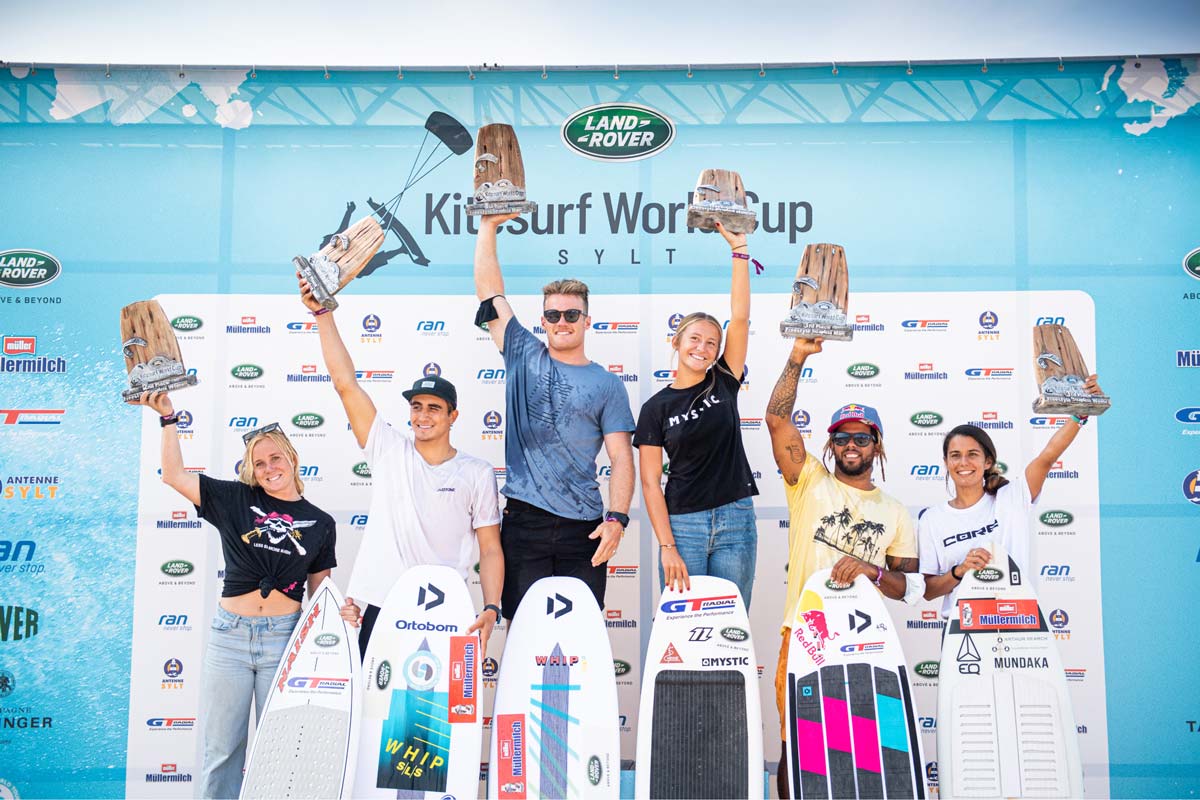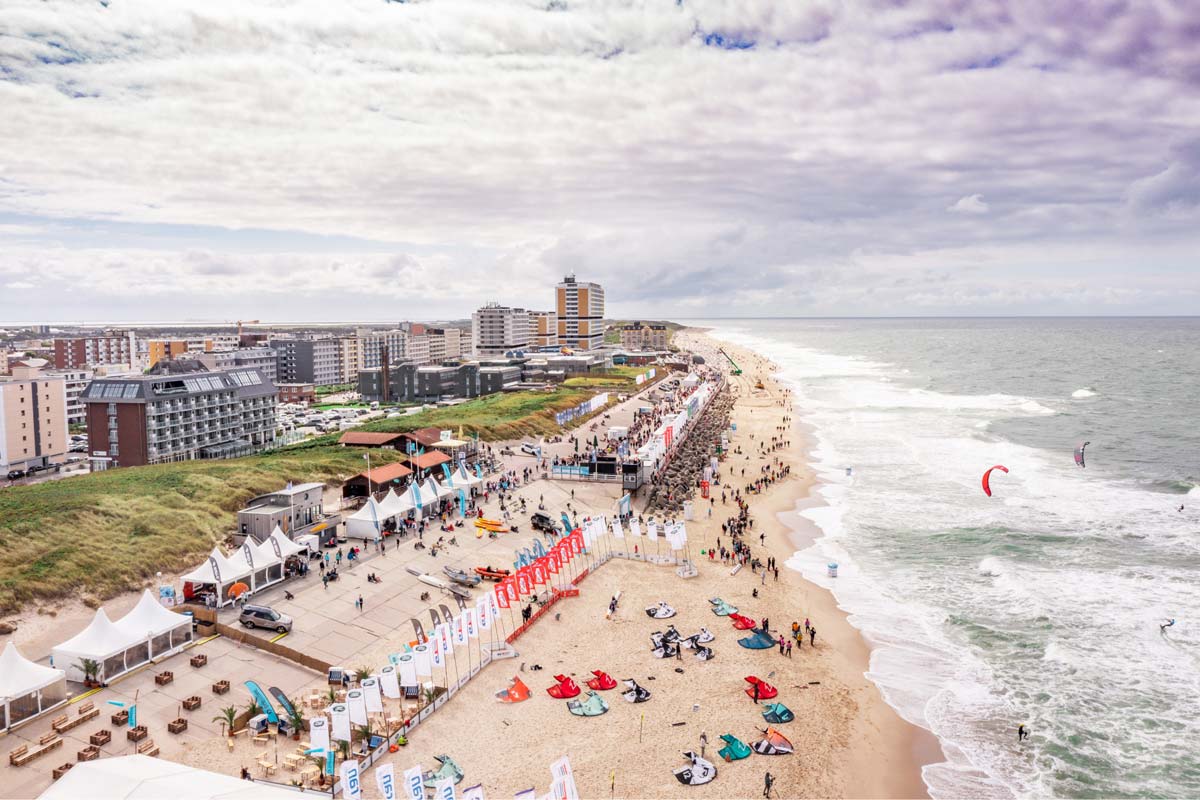
Johan Cruyff Institute brings together three sport marketing experts from Sportskred, Vexed Gaming and ACT Agency to discuss the best way for sports organizations to monetize their social media: audience segmentation, channel detection, personalized content, optimization of resources through technology platforms and the use of influencer marketing are key to the whole process
More than 50% of all global advertising spending was on digital media in 2020. For the first time in history, the balance has shifted in this direction, and it is a trend that is not going backwards. No one can live with their back to technology anymore and, although they do exist, very few manage to stay away from the influence of social media. On average, 90% of the world’s population with internet access uses social media every day for 2 hours and 25 minutes, and the average user has accounts on 8.4 different platforms. Sports organizations are producers of entertainment and, in their business management, monetizing social media is no longer a mere resource but a necessity. But they need help to avoid getting lost in a sea of content that is ineffective without a strategy that is agreed upon and carefully thought out down to the smallest detail.
Johan Cruyff Institute brought together three experts in sport marketing and sponsorship in a webinar to discuss the use of social media and its optimization, solutions applicable to a sports club, an esports organization, a sponsor brand, a league, an association or any entity that organizes sporting events. Unity is always strength, even when it comes to monetizing social media, and technology is the most effective vehicle for optimizing resources, time spent, maximum exposure and uniformity in the message.
The experts
 Neil Stephens is marketing director at Sportskred, a technology business that helps teams, rights holders and sponsors build and monetize their social media networks based on the content shared by their players, ambassadors and fans in order to create strong marketing and sponsorship campaigns. Neil has worked in digital media for over 20 years in senior roles at various agencies, where he has worked with brands such as Netflix, Sony and Unilever on their search engine and social media strategies. More recently, Neil has been working with influencers in the sports industry, with an emphasis on football.
Neil Stephens is marketing director at Sportskred, a technology business that helps teams, rights holders and sponsors build and monetize their social media networks based on the content shared by their players, ambassadors and fans in order to create strong marketing and sponsorship campaigns. Neil has worked in digital media for over 20 years in senior roles at various agencies, where he has worked with brands such as Netflix, Sony and Unilever on their search engine and social media strategies. More recently, Neil has been working with influencers in the sports industry, with an emphasis on football.
 Pei Zhi Liou is a co-founder and COO of Vexed Gaming, a UK-based esports organization with a strong global fan following. Pei has been interested in the esports industry from its humble beginning 16 years ago and been actively involved in the industry thorough running Vexed and promoting esports in the wider entertainment industry for over 3 years.
Pei Zhi Liou is a co-founder and COO of Vexed Gaming, a UK-based esports organization with a strong global fan following. Pei has been interested in the esports industry from its humble beginning 16 years ago and been actively involved in the industry thorough running Vexed and promoting esports in the wider entertainment industry for over 3 years.
 Birgit Ballhause is projects and operations manager at ACT Agency, which organizes the Windsurf World Cup Sylt and Kitesurf World Cup. Birgit has been working in the sports sector for more than 30 years, in areas ranging from organizing events to managing the German national windsurfing team whose biggest stars are the Dunkerbeck brothers, Björn and Britt.
Birgit Ballhause is projects and operations manager at ACT Agency, which organizes the Windsurf World Cup Sylt and Kitesurf World Cup. Birgit has been working in the sports sector for more than 30 years, in areas ranging from organizing events to managing the German national windsurfing team whose biggest stars are the Dunkerbeck brothers, Björn and Britt.
An effective technology platform for all
“Fans follow a club, but they love the players and this is reflected on social media,” says Neil Stephens. Based on this reality, Sportskred‘s goal is to create a network that boosts fan engagement through its technology platform. Activating the network is simple: you create your campaign, select the players and ambassadors who will act as distribution channels and you hit send. Everyone receives the content through the application and publishes it on their social networks. The platform takes care of analyzing the results—who has published the content and how effective it has been—which savies you hours of reporting and is fully customized for your brand.
“If we take Ajax as an example and specifically their Instagram, they have 5.9 million followers. It’s a very large community, much more than you can fit in a stadium, but if you look at the engagement rate it’s only 1.13%. That’s very common, but with a little research we’ll see that, adding the first team players’ followers, the club has a community of 11.5 million people at its fingertips. That network as a whole would generate 8.05% engagement, about 8% more than the club’s own Instagram,” Neil explains.
“Fans follow a club, but they love the players and this is reflected on social media” – Neil Stephens (Sportskred)
Influencer marketing is a growing, and it’s a huge industry, especially on Instagram. Although there can be confusion between influencer marketing and sponsorship, the important thing is that the person chosen is, in fact, an influencer. Sportskred conducted a survey on the perception people have when a brand pays an athlete to promote their product or content on social media. “For 25%, it’s influencer marketing, 11% think it’s sponsorship and 64% think it’s both. I fall into the last group. Influencer marketing is now a subset of a sponsorship package and not everyone gets it right,” says Neil.

In influencer marketing the important thing is that the person chosen is, in fact, influential.
“Some clubs do an extraordinary job just with a mobile phone, with fresh content that attracts a lot of views, but for most teams, especially the big ones, their social media just looks like a poster on a teenager’s wall—it’s just another static photo, another inspirational quote, they don’t bring much to the audience.”
To monetize social media properly, you need to:
- Engage fans by asking questions, encouraging interaction and stimulating engagement.
- Find athletes with interests beyond sport. Be the content, not the add-on. With the pandemic, sport stopped and we started to see more of the human side of athletes. They have hobbies, they have interests, they have causes they are passionate about. It’s about making a real and genuine connection, content with a lot of credibility. Brands can connect with fans through the stories of their athletes. And it’s also good for the athletes because it’s a hobby, an interest they already have, it’s not forced.
- Use video in publications: it is the biggest content driver.
- Collaborate among all the members of the network: it will increase your audience and will be more monetizable.
There are two ways for sports organizations to monetize their social media:
- Platform revenue: the athletes share the content created for the network
- Brand collaborations: sponsored post (#ad); longer term ‘themed’ collaborations; logo on the screen or ‘thanks to our sponsor’ call outs
To develop a good content strategy, it is essential to do some preliminary work that involves “being very clear about your value as a brand, what you represent and translating it into creativity; knowing your audience very well and, once you know where they are and what channels they use, targeting brands that you can collaborate with in different countries. Delivering good content on social media takes a lot of work, but it pays off,” says Neil Stephens.
Data analytics is crucial to understanding the effectiveness of any marketing campaign and will help us propose next targets to sponsors. “We talk to a lot of brand managers who tell you that their sponsorship budget is already closed. And that’s a mistake, that’s not how Facebook, Google or Instagram work. If it’s working, you have to keep feeding it to keep it effective,” warns Neil.
“We talk to a lot of brand managers who tell you that their sponsorship budget is already closed. And that’s a mistake, that’s not how Facebook, Google or Instagram work” – Neil Stephens (Sportskred)
The world of esports: digital content in a digital environment
One could get the impression that, for esports organizations, monetizing social media should be much easier than with traditional sports teams because their natural environment is already digital. But this is not the case.
Esports, the professional competitive element of the video game industry, is the most appropriate way to reach new generations.

Vexed’s sim racing driver competing digitally against a real racing driver.
However, according to Pei Zhi Liou, co-founder and COO of Vexed Gaming, before trying to monetize social media among the digital community, you need to understand your audience better; what demographic they fit, what digital platforms they are on and what technology they use. “This means you have to create content that fits the platform and responds to the behavior of your audience. In the UK, our main platform is Twitter, but depending on the generation, behavior changes. Esports is a product that was born with the millennials, a generation where laptops are widely used, as opposed to the Generation Alpha (the generation after GenZ) who do everything on their mobile.”
In esports, you have to take into account demographics, age, platform and the tools that this huge community uses to consume content. But according to Pei, “social media won’t influence the market if you just create content, it’s not that simple. If you want to attract esports fans, it’s vital to dig deeper into the behavior of your audience and the technology side. At Vexed Gaming we have teams, players and streamers that play competitively or provide game-based entertainment. Through them we attract fans which, in turn, helps us attract sponsors. They also help feed other revenue streams, such as merchandising, licensing, marketing activations and prize winnings. From this, we become a media agency for our sponsors and brands by leveraging our own distribution channels, which are the various social media platforms and accounts Vexed is active on.”
“If you want to attract esports fans, it’s vital to dig deeper into the behavior of your audience and the technology side” – Pei Zhi Liou (Vexed)
Streamers and influencers
In esports, unlike traditional sports, it is the brand that drives following. “In esports, it’s still difficult to get fans to follow players unless they are superstars. Esports players are so busy with training and competitions that they hardly find time to do the ‘influencer’ role and promote themselves. So, in general, it’s the brand that represents them that does the promotional work,” explains Pei. Beyond that, we are also active in growing our fan following beyond our competitive activities. “We have to diversify our audience because, as a company, we would not be attractive to a brand or sponsor if we only have one fan profile. The visibility would be limited. So, we work with streamers and try to initiate collaborations with other influencers within or outside of esports industry. Then we actually develop the content for our partners, rather than using their own. We know the sports market and we know what works, so if you’re marketing to our audience, use our creative skills to maximise the impact.”
“We work with streamers and try to initiate collaborations with other influencers within or outside of esports industry. Then we actually develop the content for our partners, rather than using their own. We know the sports market and we know what works to maximise the impact” – Pei Zhi Liou (Vexed)

Vexed is the first esports team to establish a partnership with Kappa clothing.
One of the latest activation campaigns Vexed Gaming created was for Logitech G. It featured a Vexed Gaming player at the controls of the latest generation Logitech G steering wheel competing against a traditional racing driver; driving through the same circuit (real and digital), under the same conditions. Victory went to the gamer and the simulated race racked up over half a million views in just 48 hours. As of today, the content generated 12 million impressions and +9,400 purchases for Logitech G, which amounted to over £2 million in revenue from that campaign alone.
“Data analytics is paramount for brands, before and after the campaign,” says Pei. “Before, you need to justify why you are using a particular channel and how much media value it can bring. After the campaign, the data will allow you to show the effectiveness of the campaign. If you can demonstrate that you have generated revenue for the brand, and you show that it comes from your channels, then you can build further conversations around more diverse activities and business models.”
Vexed Gaming partnered with Sportskred because “their technology gives us a very complete view of the whole process and can help us optimize the distribution of the content we create and provide detailed tracking of its impact. This is vital in delivering the type of reporting that brands expect and showcasing the real value we give them.”
“If you can demonstrate that you have generated revenue for the brand, and you show that it comes from your channels, then you can build further conversations around more diverse activities and business models” – Pei Zhi Liou (Vexed)
For Pei Zhi Liou, authenticity is very important in influencer marketing. “We are gradually educating brands and the industry in general. We came from a time when a single ad was enough for any channel. Today’s ‘ads’ world is more complicated and will continue to be more complicated in the future. You have to create content that is tailored to each community. It’s more work, but the fidelity of your audience will also be greater than in the past. To monetize social media, you have to have a great creative team, perfect execution and excellent choice of distribution channel for a specific campaign. It’s the only way to success.”
The formula for sporting events organizers
The monetization of social media is also a priority for companies whose main activity is the organization of sporting events, especially if they are seasonal competitions, emerging sports and if the weather plays a role and alters the course of the competition. All of these scenarios are present in the case of the Sylt Windsurfing and Kitesurfing World Cup and have an impact on the great work carried out by the ACT Agency, organizer of the event.

Kitesurf World Cup Sylt podium.
The ease with which windsurfing and kitesurfing attract spectators to the beach in Sylt, one of Germany’s most famous and popular holiday destinations, was in stark contrast to the lack of social media activity before the Sportskred platform entered the fray. As Birgit Ballhouse, project and operations manager at ACT Agency explains, “it’s always a challenge for us to get media coverage because you never know when the wind is blowing and the waves are good. We also found it difficult to incorporate social media into our small budget. At first, integrating them was very costly because, as Neil and Pei said, it takes a lot of work to properly use all the channels you have and to create specific content for each one. We started using Facebook, then Instagram, Snapchat, but nothing really worked because we were so small at the beginning.”
“We can now create customized campaigns for our sponsors, content that we have never created before and use the attraction that our athletes have in different countries to activate sponsorships through content” – Birgit Ballhause (ACT Agency)
They have the product, a unique environment, the ideas to promote it and the best surfers in both specialties to act as a loudspeaker. Here the athletes are once again acting as a magnet because, beyond being the stars of their sport, they are accessible to everyone who comes to the beach to enjoy the event. During the six days of competition, 50 athletes of more than 10 nationalities compete at Sylt for a total prize money of 30,000 euros and a decisive point for the world championship standings. More than 6.3 million people stayed overnight on Sylt Island in 2019 to follow the competition.

More than 6.3 million people stayed overnight on Sylt Island in 2019 to follow the competition.
ACT Agency conducted an interesting market research study to detect its target audience: 42% are female, 58% male; 59% are under 39 years old; they are highly educated (48% college graduates); 70% are employed and 18% are students; 52% have attended the event several times and 96% use digital media.
The agency is responsible for the production and distribution of photos and video images throughout the event and also live streams. An editorial team is dedicated to social media coverage and they provide media services (press, radio and TV) on site.
“It was impossible for us to track the digital activity of all the athletes and we hired Sportskred to do that tracking. We can now create customized campaigns for our sponsors, content that we have never created before and use the attraction that our athletes have in different countries to activate sponsorships through content.”
With the monetization of its social networks, the ACT agency aims to:
- Generate personal stories of athletes with high engagement rates for their own benefit and for the benefit of sponsors.
- Increase the sponsorship budget.
- Attract the interest of international brands and enhance communication in different countries.
- Generate additional income for the athletes that will last beyond the event.
Birgit stresses that “in the windsurfing and kitesurfing world, athletes are already used to finding their own sponsors, but we are happy to help them earn more revenue together with Sportskred.” This has required a process that technology has helped to simplify. “Five years ago, when we started integrating the athletes’ KPI’s (metrics to quantify the effectiveness and productivity of the actions), it took us more than four months of work to count the Facebook posts of the activity on the island. Now we can do it through the digital platform in a short time,” says Birgit.

Brazilian Pedro Matos is ranked second on the GKA World Tour.
Whether there are waves or not, whether the wind is blowing in our favor or not, whether our sport is traditional or born in the digital era, the resources offered by social media are infinite. Sports organizations have understood that there is a whole world to explore beyond what happens on the playing field. “The experiential and the digital coexist,” says Neil Stephens.
There are few arguments to counter those who continue to prefer watch sport in person. That experience is always going to win, but when you enjoy something, you like to extend it as long as possible, to remember it, and social media help to do that.







Hi, Good day. This is a perfect guide for any beginner onmonetize their social media. It can often be super confusing when you are new to affiliate marketing and you may not be aware of how to go about things. This article is great as it talks about the various factors that can make Affiliate marketing good. I agree with every single point that has been mentioned above.